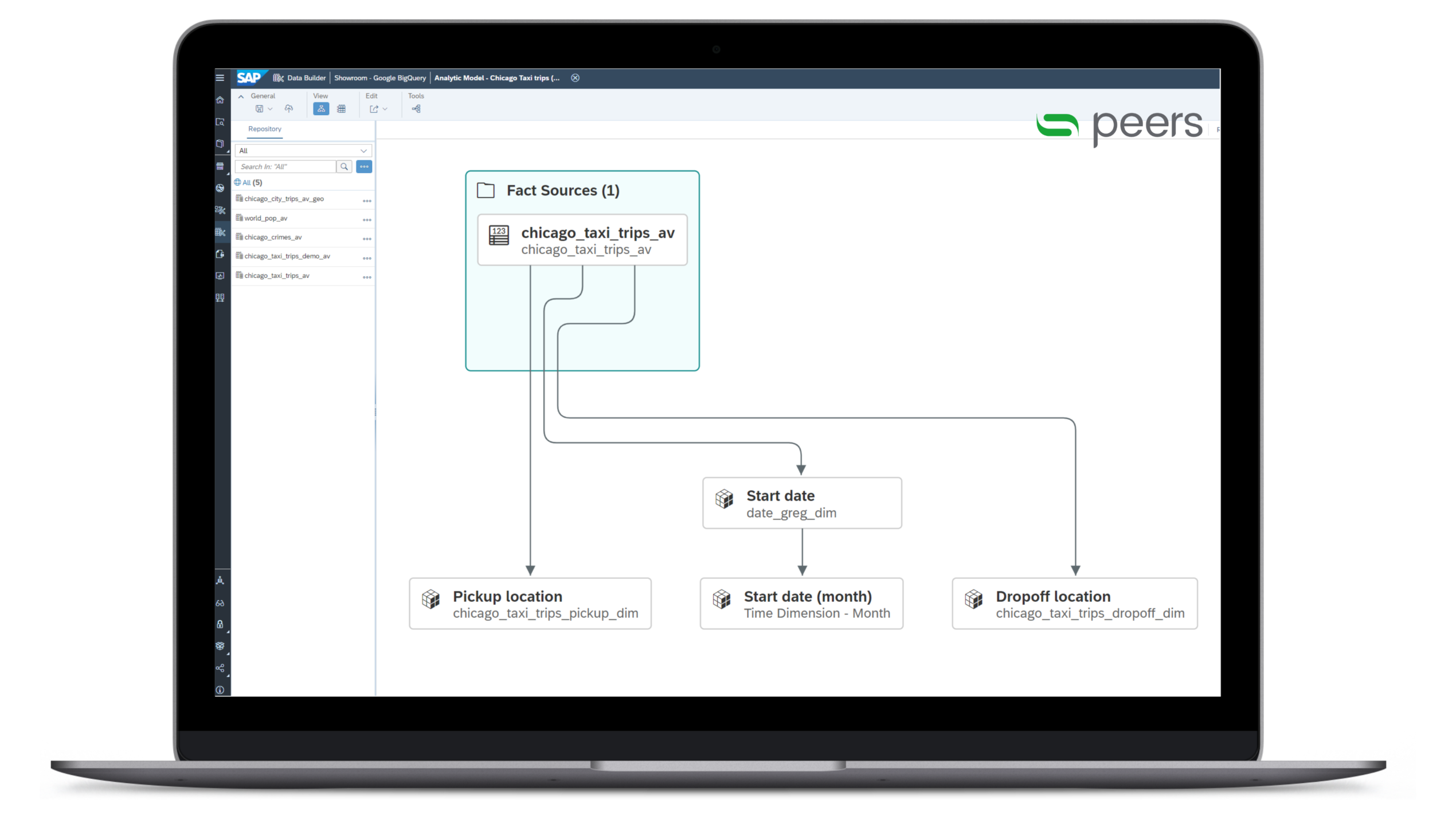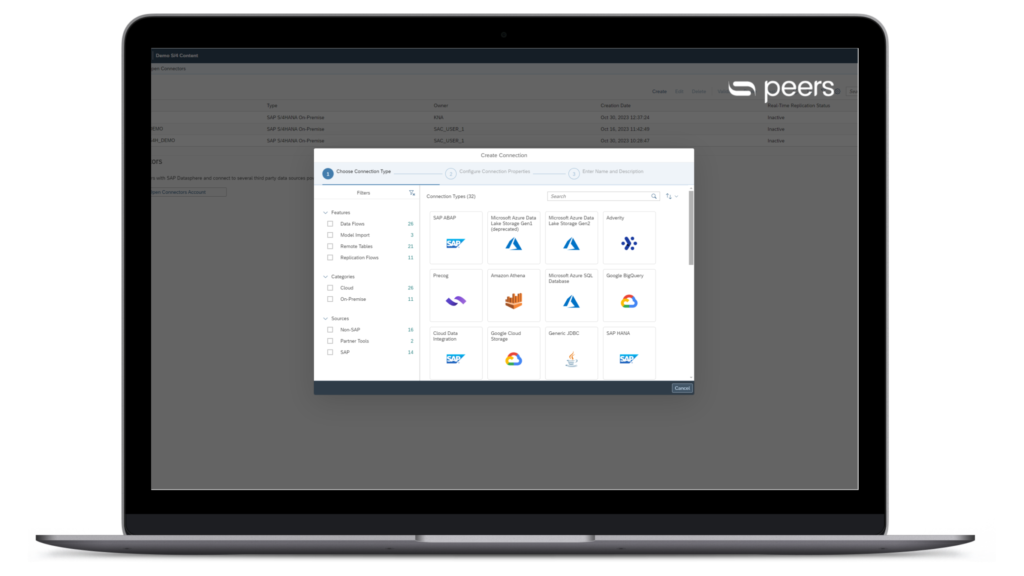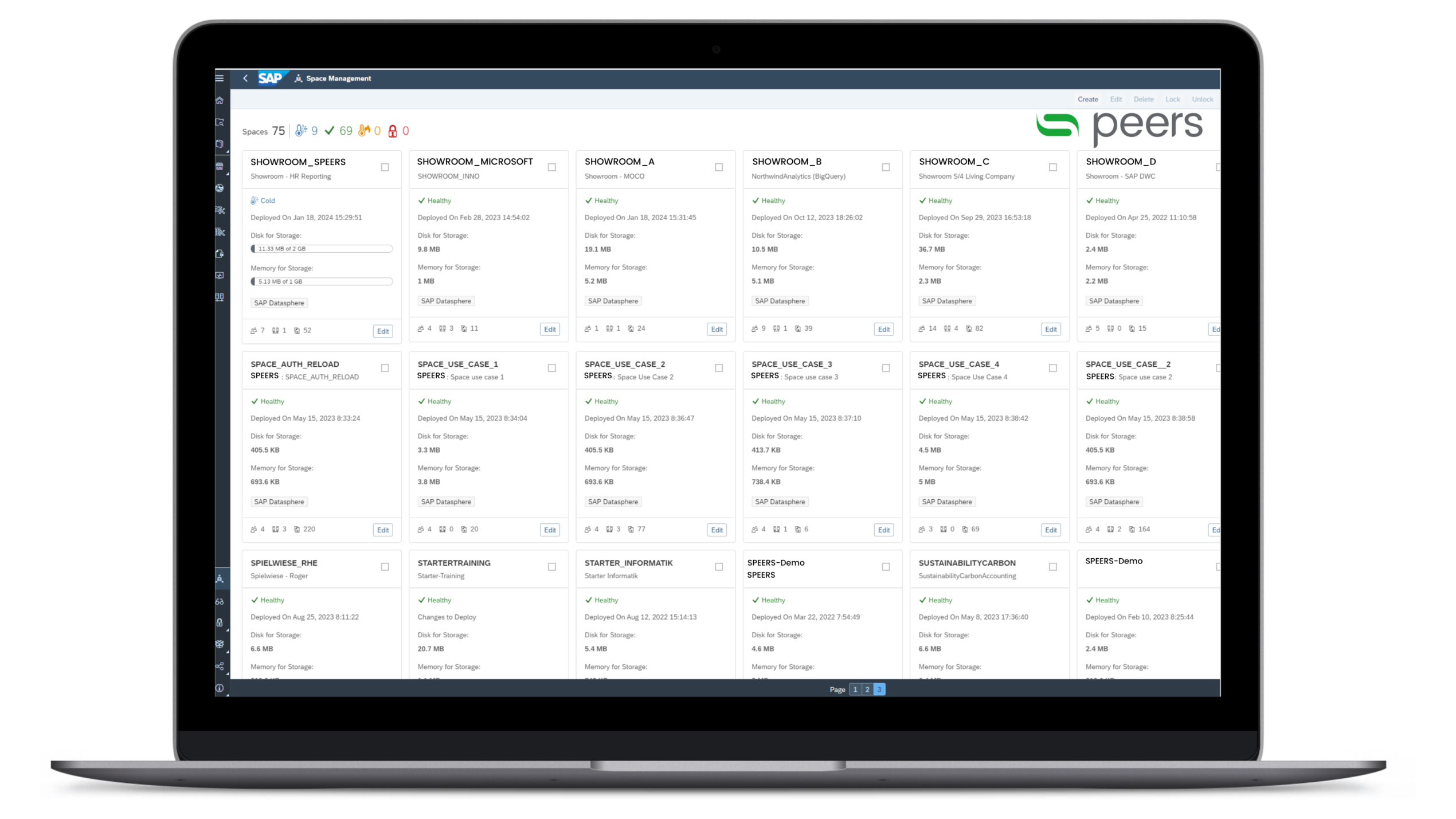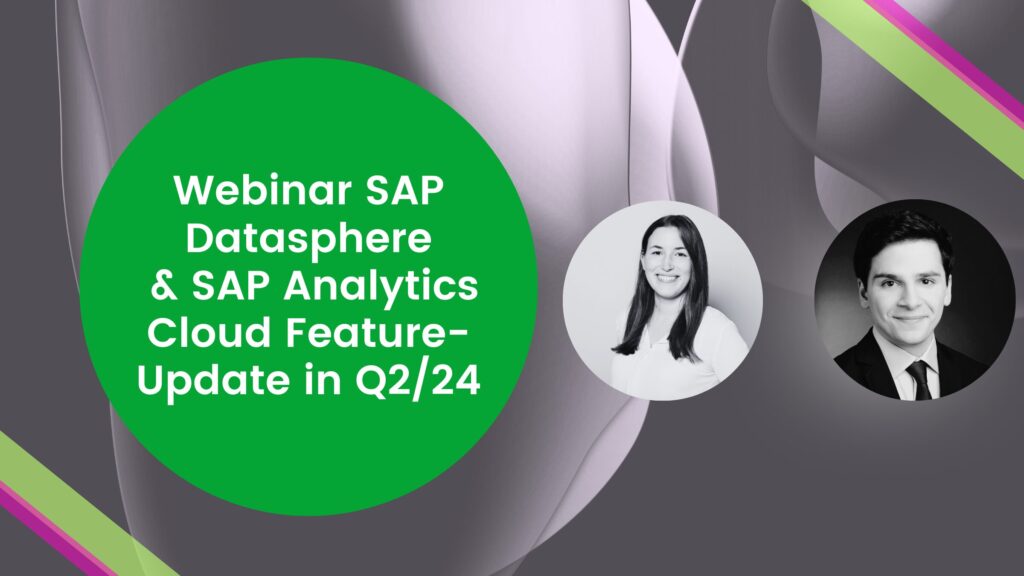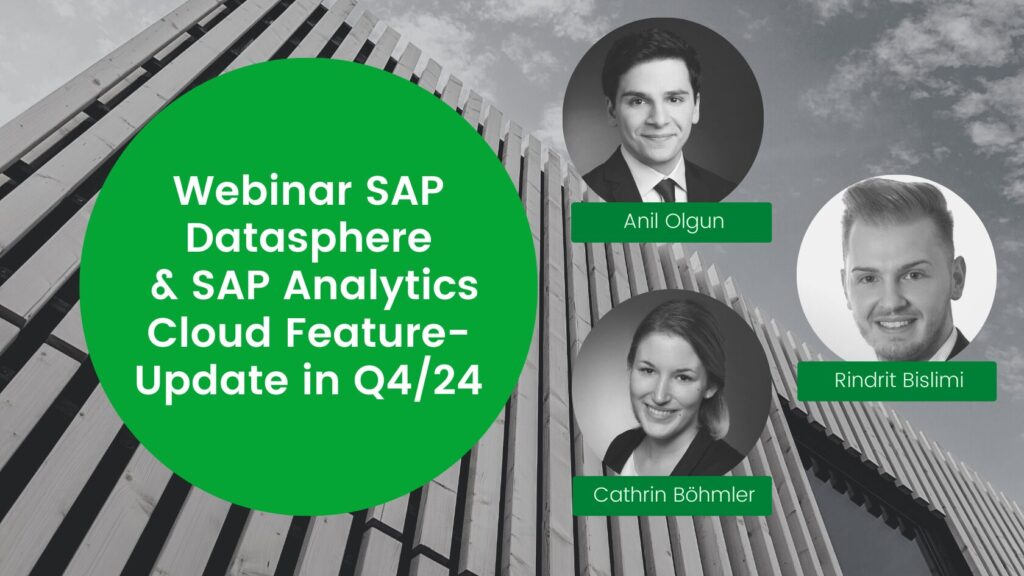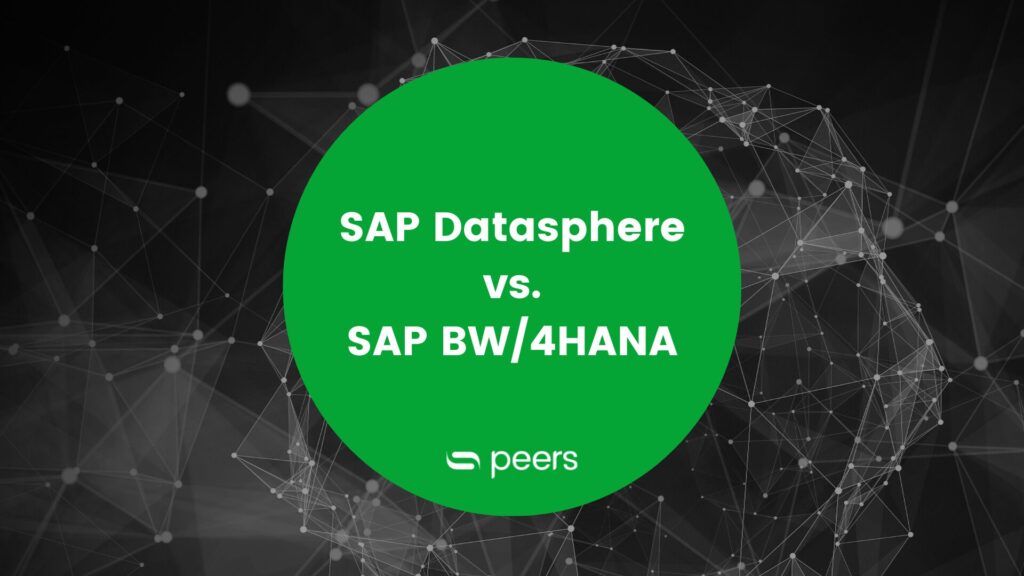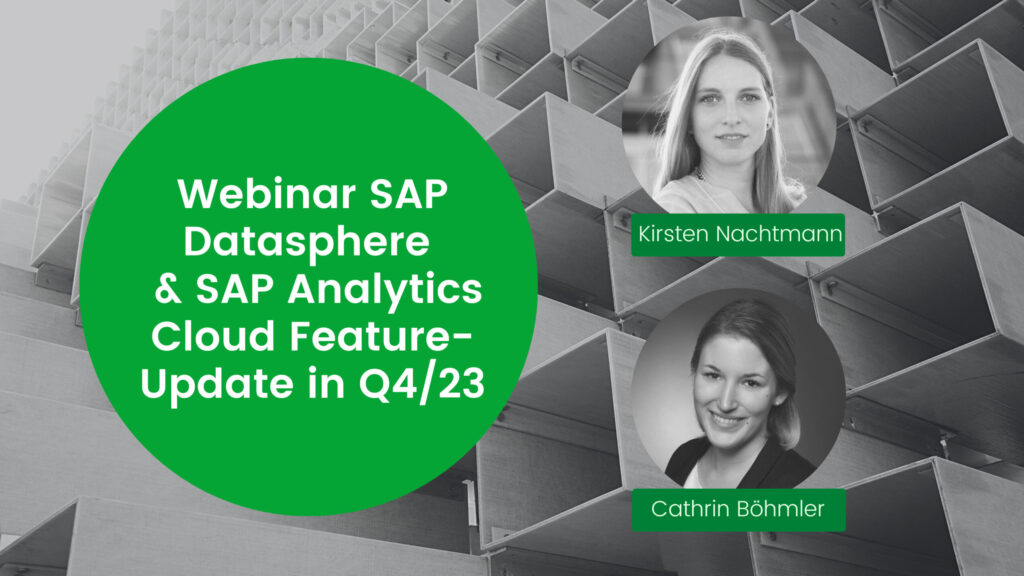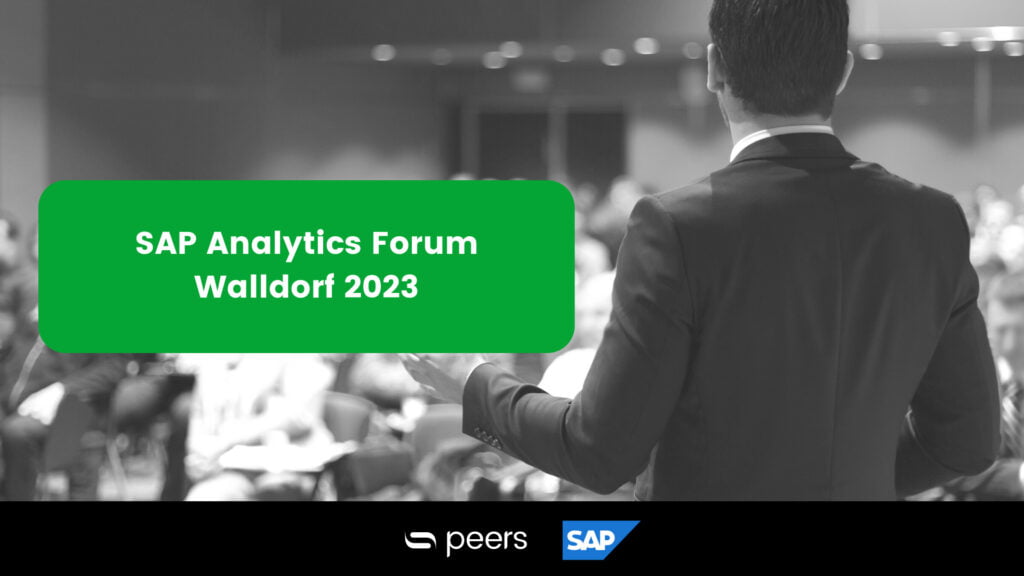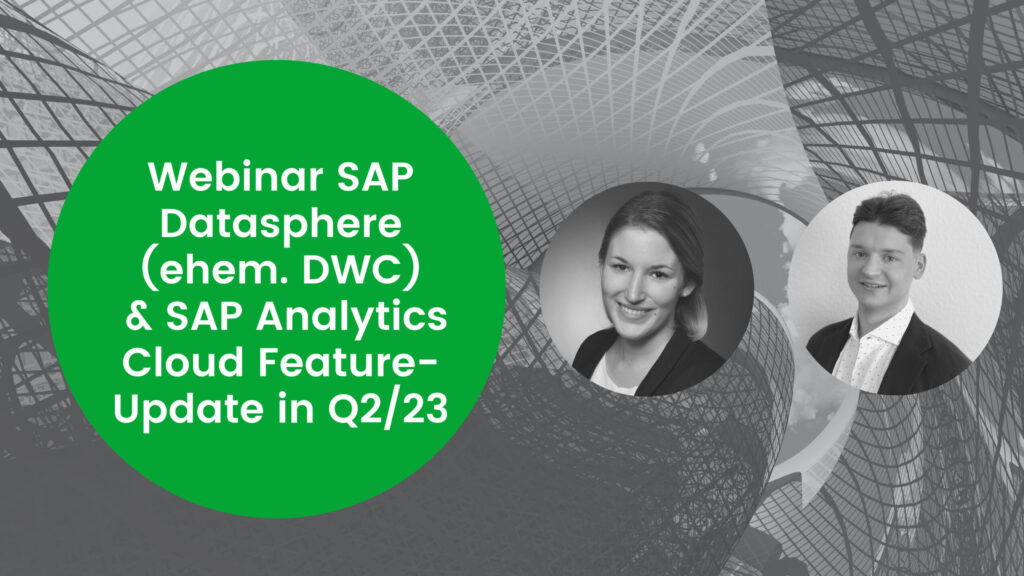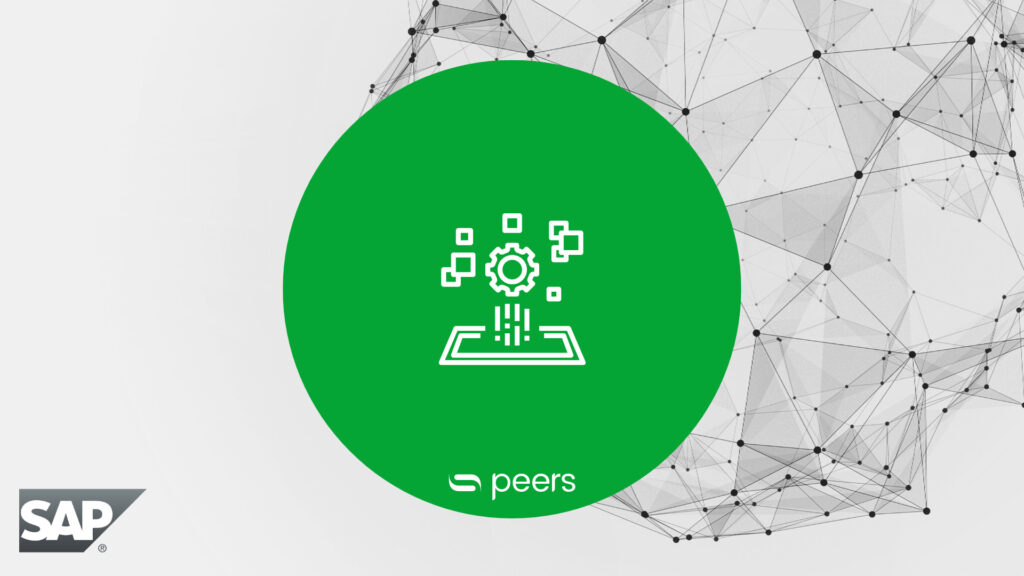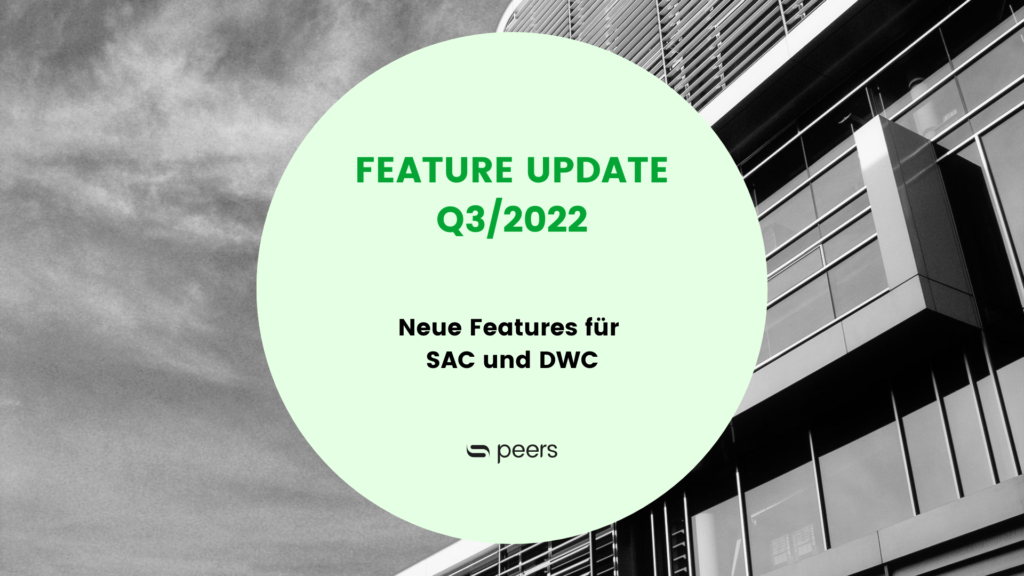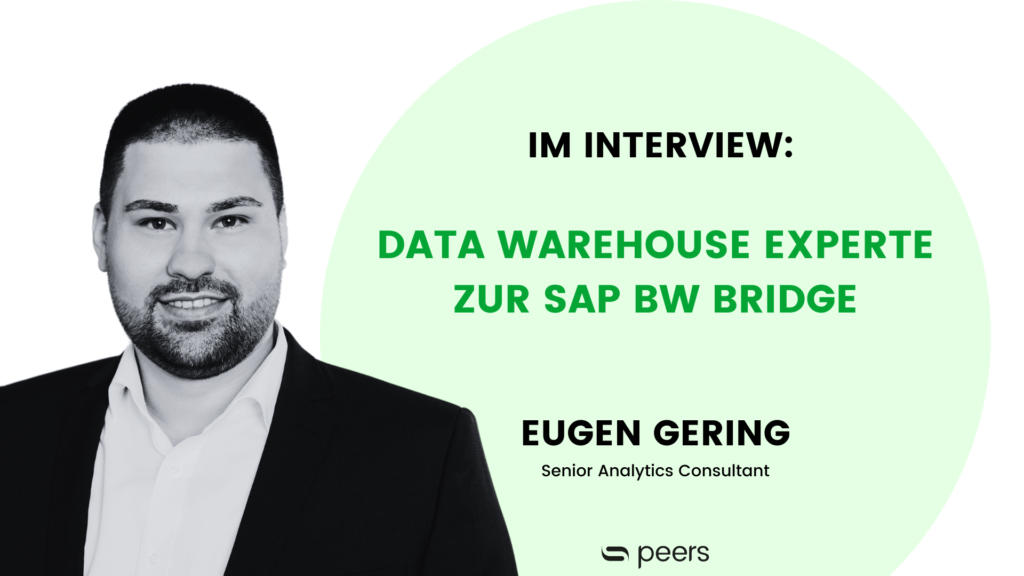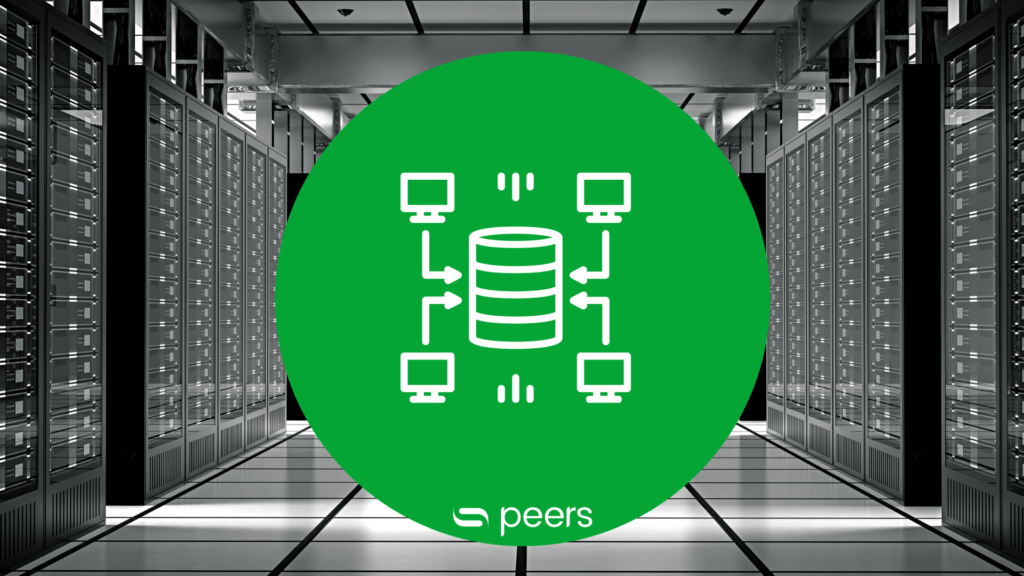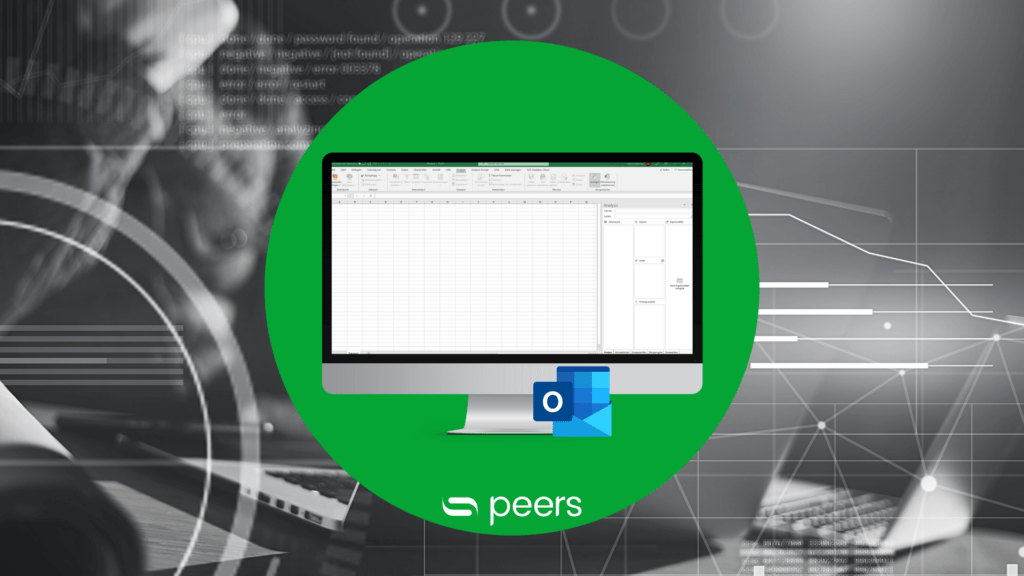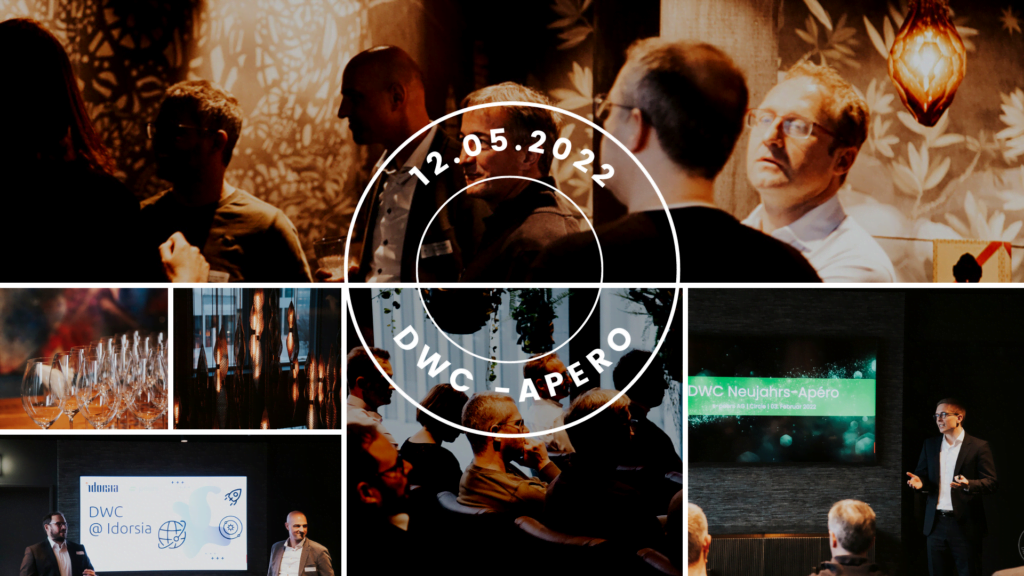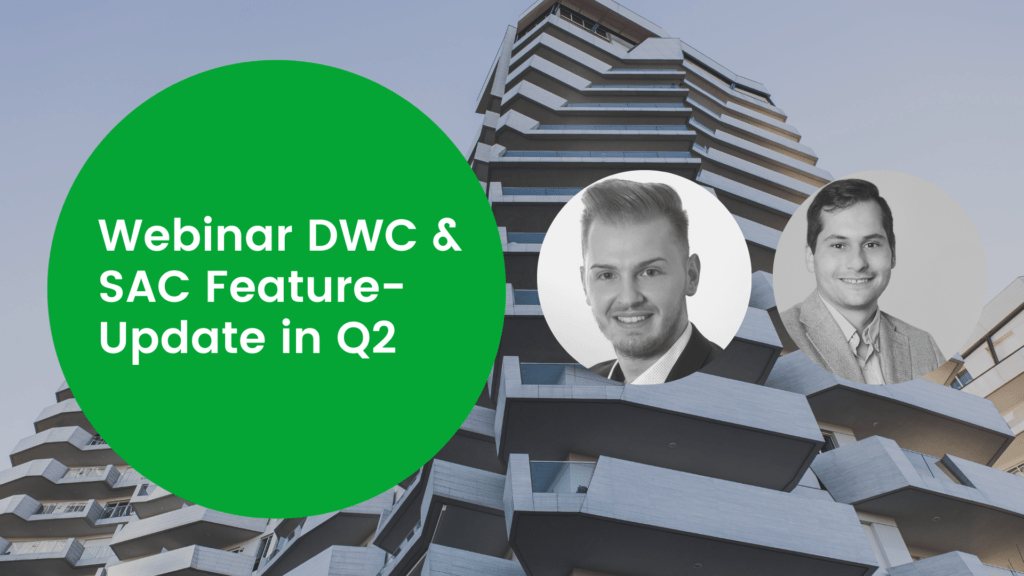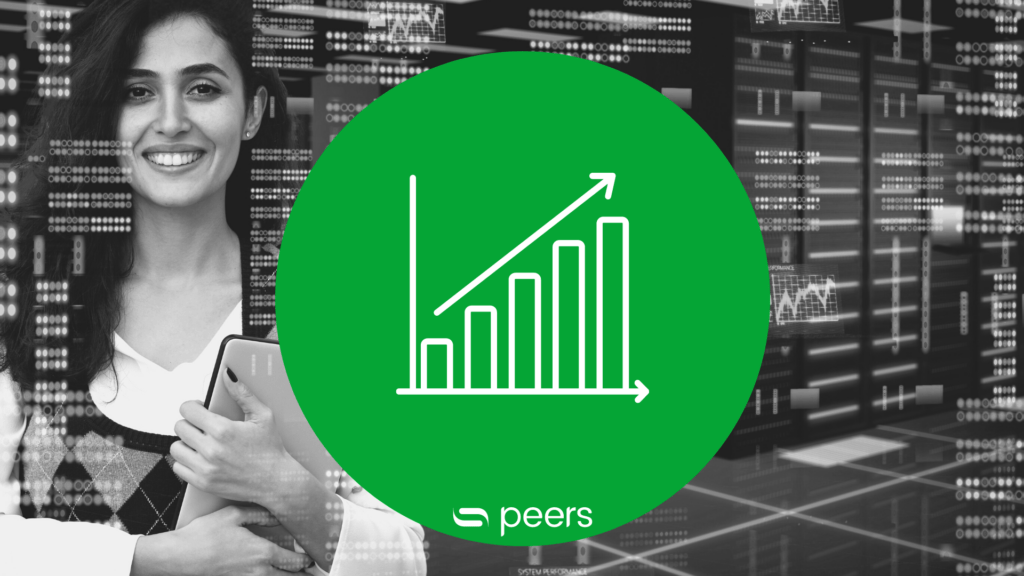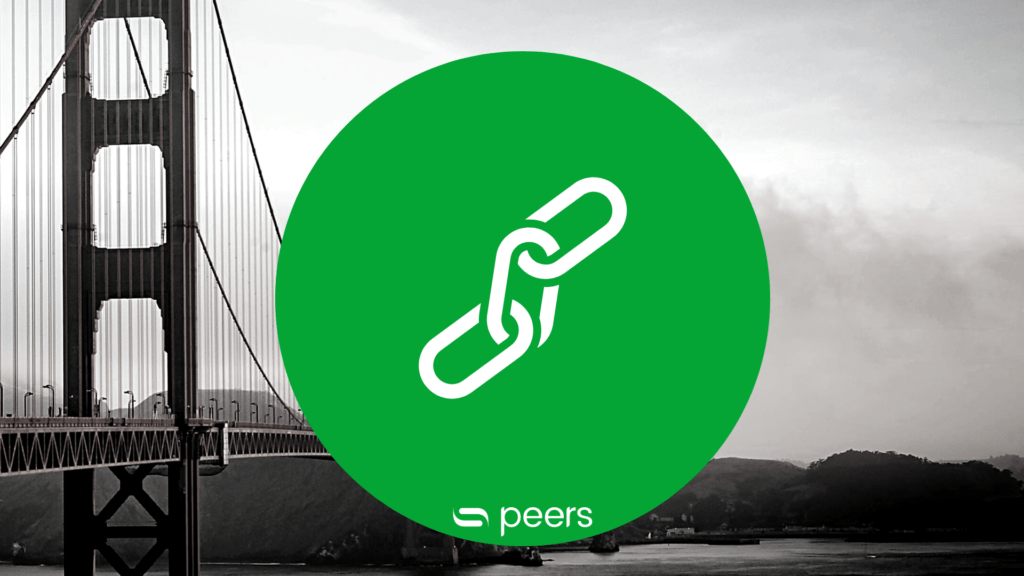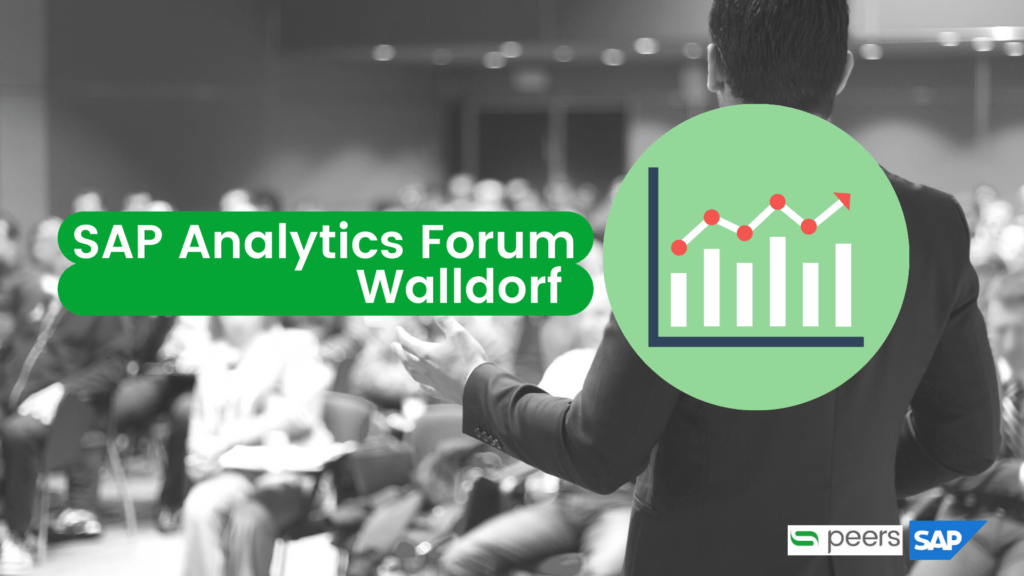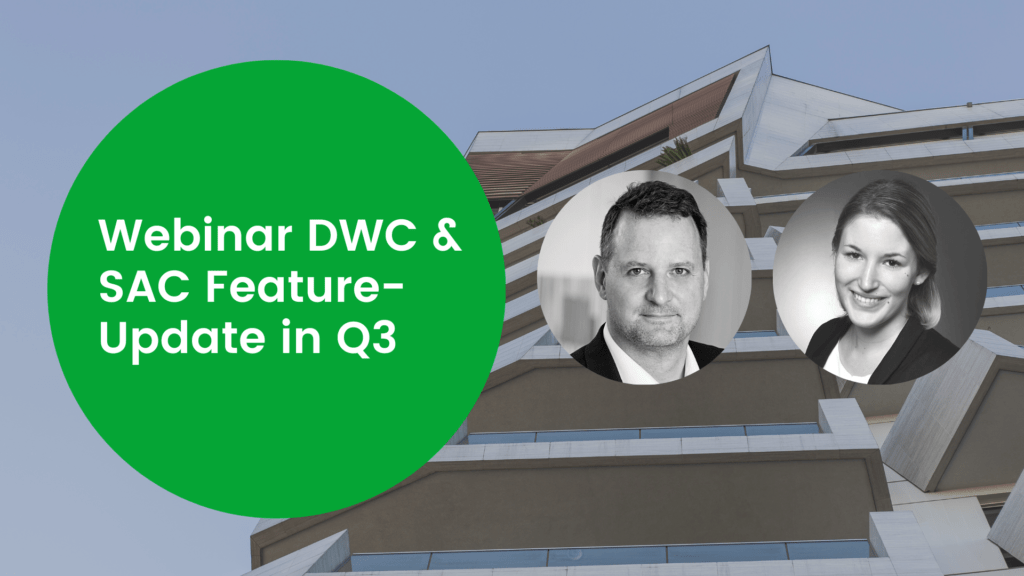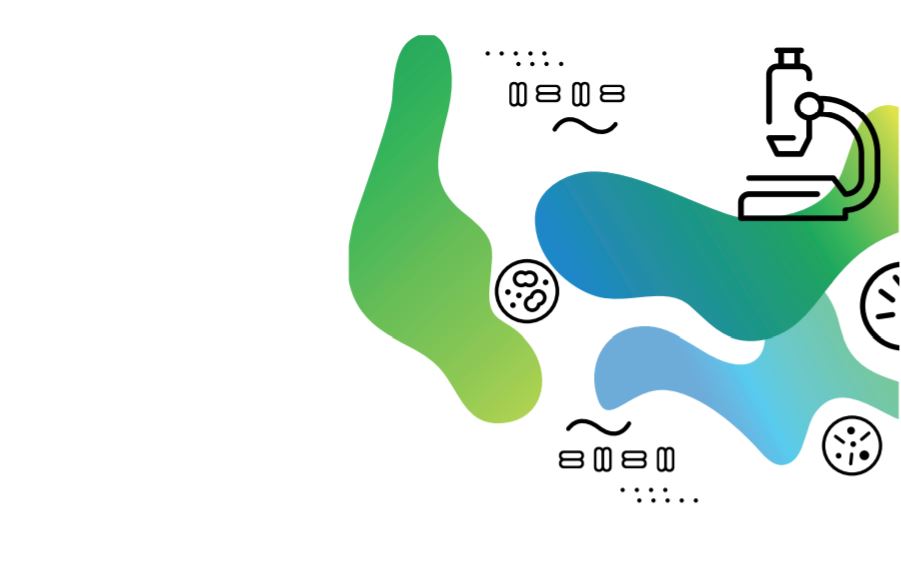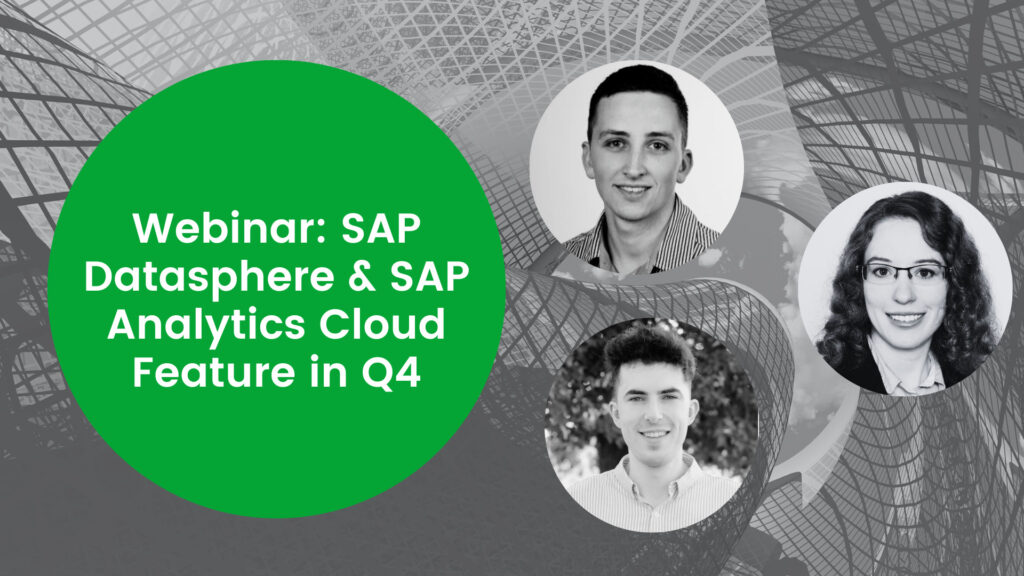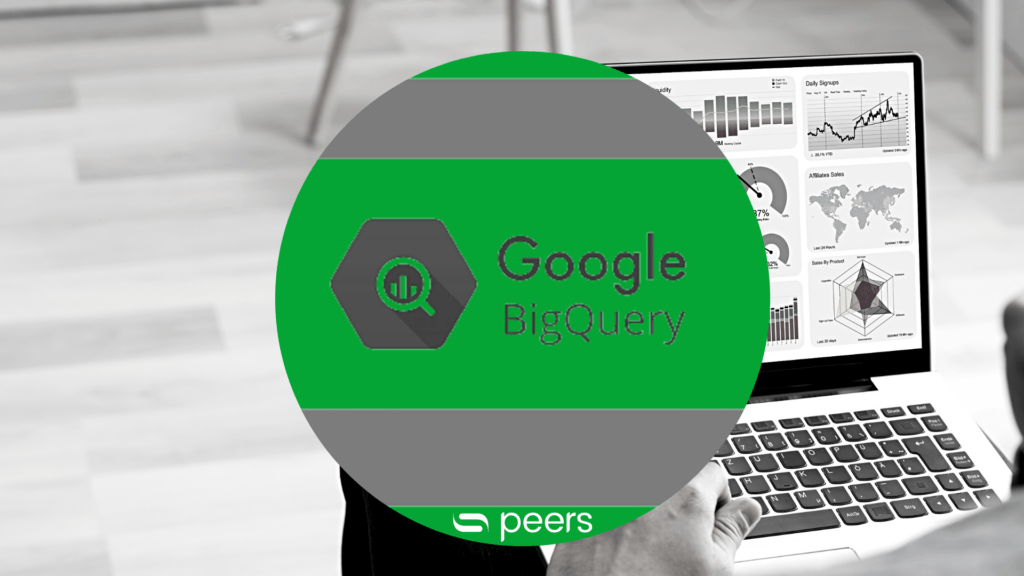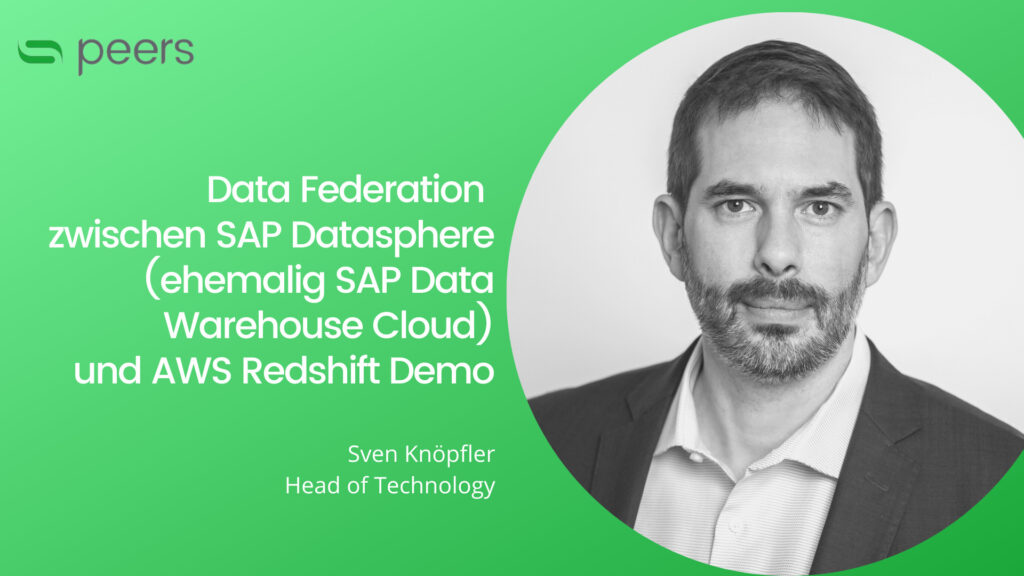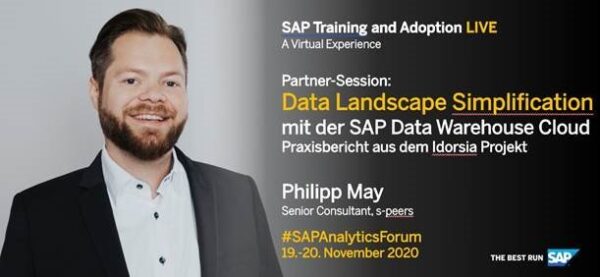SAP Datasphere – Die Zukunft des Data Warehousing
Das innovative und cloudbasierte Datenökosystem der SAP für Fachbereichs- und IT-Benutzer ermöglicht im Self-Service Datenmodellierung, sowie -verarbeitung und vermeidet Schatten-IT-Lösungen durch eine vereinfachte Datenlandschaft mit zusammenhängender und einheitlicher Dateninfrastruktur.
Die SAP Datasphere schafft ein umfassendes Datenökosystem, indem die Integration und Wiederverwendbarkeit von Daten aus verschiedenen Quellen und SAP & non-SAP Systemen ermöglicht wird. Dies schafft eine hervorragende Basis für Advanced Analytics-Use-Cases als Daten- und KI-Plattform und geht über ein klassisches Data Warehouse hinaus.
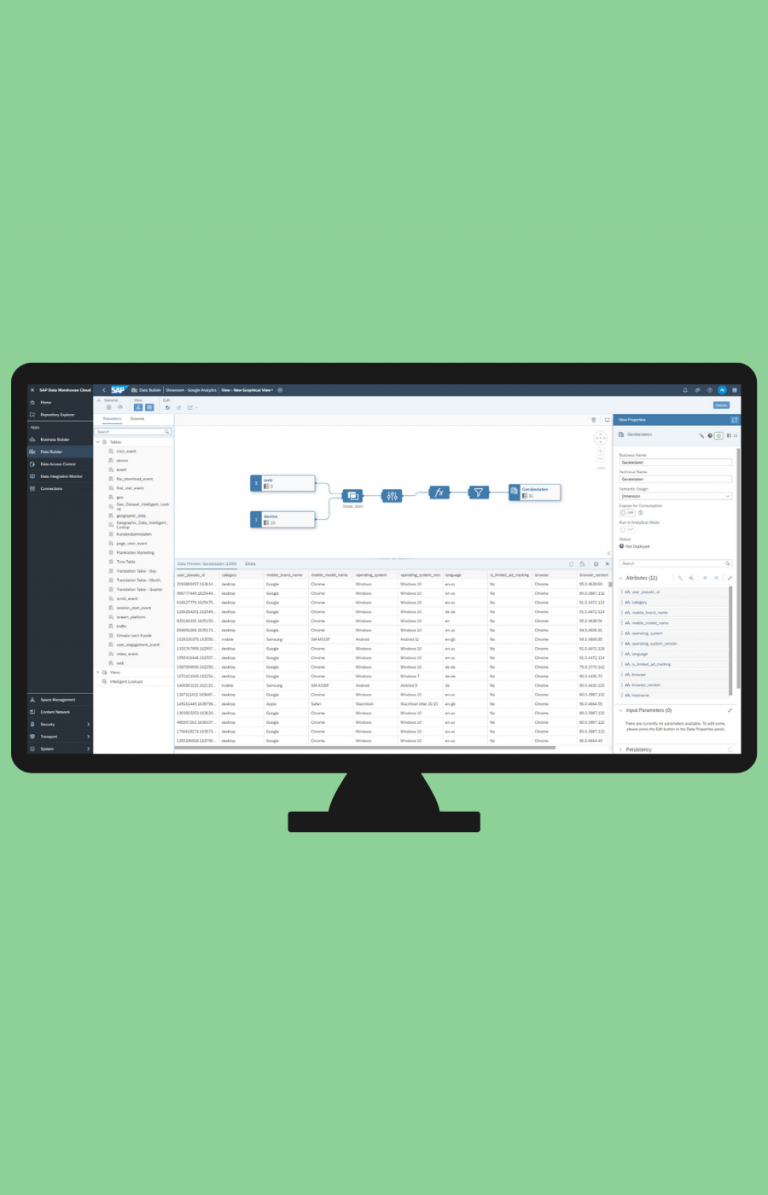
SAP Datasphere – Die Zukunft des Data Warehousing
Die innovative, cloudbasierte Data-Warehousing-Lösung der SAP für Fachbereichs- und IT-Benutzer ermöglicht im Self-Service Datenmodellierung und vermeidet Schatten-IT-Lösungen. Die Wiederverwendbarkeit und Möglichkeit der Verknüpfung von zentralen und eigenen Datenquellen schafft eine hervorragende Basis für Storytelling oder Advanced Analytics-Use-Cases.
Alle coolen Data Warehouse (DWH) Features werden zuerst in der SAP Datasphere released
Die SAP bezeichnet die SAP Datasphere als das "strategische Produkt" der Datawarehouse-Lösung. Dies bedeutet: Neue Features (wie z. B. der Data Marketplace) werden in Zukunft nur noch in der Datasphere released. Andere Data Warehousing Produkte (wie SAP BW on /4 HANA) werden noch maintained, aber nicht weiterentwickelt.
Managed Self Service
Fachbereiche werden befähigt eigene Datenmodelle zu bauen oder zentrale Modelle zu erweitern. Dies führt zu einer Beschleunigung und schnelleren Verfügbarkeit von Berichten .
Cloud-basiert
Keine Investitionen in On-Premise-Hardware notwendig und schnelle Verfügbarkeit.
Connect to all
Integration mit anderen (SAP)-Analytics Tools: Daten Remote-Zugriff sowie übersichtliche Darstellung aller Daten – auch mit nicht SAP Produkte. BW4 und S/4 HANA Integrationen sind weiterhin möglich.
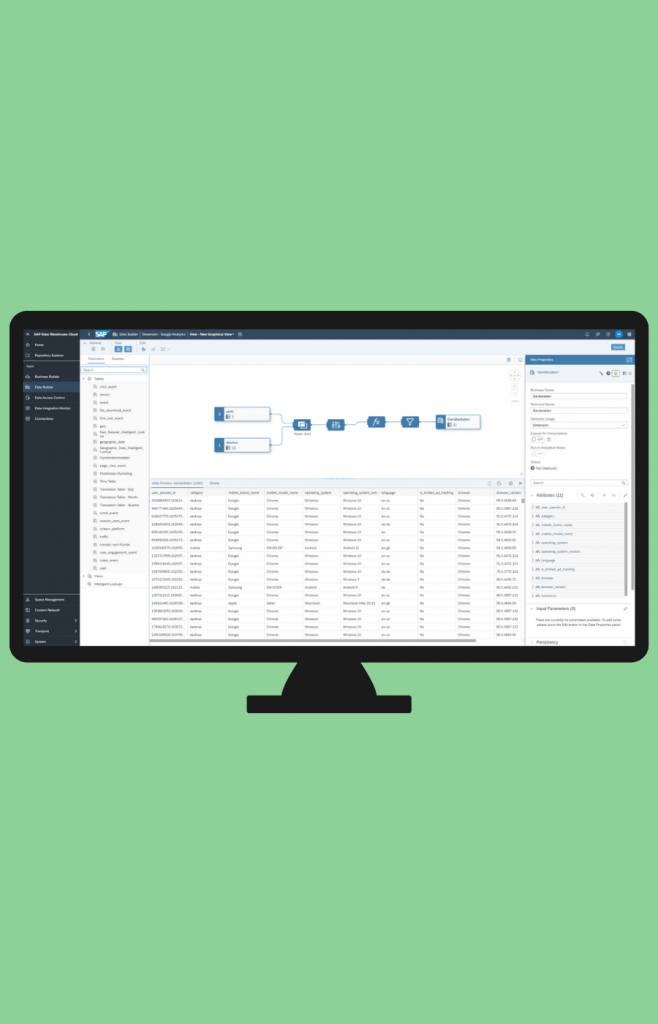
Das sind die Vorteile der SAP Datasphere
Harmonisierung heterogener Daten durch Integration mit SAP & non-SAP Lösungen in der Cloud
Eine nahtlose und massgeschneiderte Out-of-the box Integration mit einer Vielzahl von SAP & non-SAP Data Warehousing und Data Lake Lösungen wird zur Harmonisierung heterogener Daten ermöglicht. Der Datenzugriff kann sowohl replizierend als auch rein virtuell aus verschiedenen Quellsystemen erfolgen. Die BW/4HANA und S/4HANA Integrationen sind weiterhin möglich. Die Installation von On-Premise-Hardware ist nicht mehr notwendig.
Vereinfachte und einheitliche Datenlandschaft mit Business Data Fabric
Die SAP Datasphere bietet mit dem offenen Daten-Ökosystem die Grundlage für eine innovative Business Data Fabric. Durch eine zusammenhängende und einheitliche Dateninfrastruktur wird die Möglichkeit geboten, Daten- und KI-Plattformen zu integrieren, um Daten aus verschiedenen Systemen und Standorten bereitzustellen und die Datenlandschaft für eine umfassende Analyse zu vereinfachen. Die Datasphere bietet die Grundlage, um Datenkonsumenten aussagekräftige Echtzeit-Daten mit intaktem Geschäftskontext und –logik in der Cloud zur Verfügung zu stellen.
Innovative Self-Service Plattform durch nutzernahe Datenmodellierung
Die Datasphere eignet sich als Self-Service Plattform durch die nutzernahe Datenmodellierung, sowie innovativer Funktionen, die Anwender in die Lage versetzen, Datenintegration und Datenharmonisierung eigenständig durchzuführen.
Dadurch wird den Fachbereichen eine selbstständige Orchestrierung von Datenflüssen und die Erweiterung von Datenmodellen ermöglicht. Dies schliesst nicht nur strukturierte, sondern auch unstrukturierte Datenquellen mit ein.

Was ist die SAP Datasphere (ehem. DWC)?
- 2019 wurde die Data Warehouse Cloud (DWC) von SAP veröffentlicht. Beim Release der DWC gab es zwei wichtige Milestones: (1) Release der Beta-Version Anfang 2019 und (2) die generelle Verfügbarkeit im November 2019.
- Der erste Kunde weltweit, der die DWC als Data Warehouse einführte, war die Idorsia (Schweizer Biotech Unternehmen). Die s-peers AG war als SAP-Partner bei der DWC-Implementierung massgeblich beteiligt und darf deshalb auf eine langjährige Erfahrung bei DWC-Implementierung zurückgreifen.
- Die DWC ist eine DWH-Cloud-Lösung, mit der die jeweiligen Benutzergruppen eigene Analyseanwendungen selbst, schnell und agil erstellen können. Im Verbund mit der bereits länger am Markt etablierten SAP Analytics Cloud (SAC) bildet die SAP Data Warehouse Cloud (DWC) den Kern der Produktpalette „SAP HANA Cloud Services“.
- Bei dem Produkt im SaaS-Modell (Software as a Service) handelt es sich um eine HANA-basierte End-to-End-Lösung für Data Warehousing, die Datenmanagement-Prozesse mit Advanced Analytics kombiniert.
- 08.03.2023: Renaming DWC zu SAP Datasphere und Etablierung als cloudbasiertes Datenökosystem.
“Seit 2019 gibt es die Data Warehouse Cloud (DWC), die seit 2023 als SAP Datasphere weiterentwickelt wurde. Wir bei s-peers durften die SAP DWC seit Beginn für unsere Kunden einführen und das gilt jetzt auch für die SAP Datasphere. Es ist toll, mit der SAP dieses innovative Produkt weiterentwickeln zu dürfen.”
Paul Vatter, Leiter Datenwerkstatt

Webinar
SAP Datasphere & SAP Analytics Cloud Feature-Update in Q2/24
Datum: 28.05.2024
Uhrzeit: 08.30 – 09.15 Uhr
Komponenten und Features in der SAP Datasphere
Datenmodellierung und Transformation von aussagekräftigen und verknüpften Daten
Data Builder
Der Data Builder bietet im Datenmodellierungsprozess diverse Möglichkeiten für das Integrieren, Transformieren (syntaktisch wie semantisch) und anschliessende Verknüpfen von Daten. Die Datenintegration lässt sich über einen CSV-Import, eine grafische View oder eine SQL-basierte View vornehmen. Bei den letzten beiden Möglichkeiten besteht komfortabler Zugriff auf alle Tabellen, die entweder über eine Live-Connection (z.B. On-Prem-HANA-Datenbank) angebunden oder in der Datasphere abgelegt sind.
Für anspruchsvolle Datentransformationen oder Replikationsdienste bietet der sogenannte Data Flow neben grafischen Transformationswerkzeugen auch die Möglichkeit die Programmiersprache Python zu nutzen. Möglich ist zudem die Definition von Entity-Relationship-Modellen, die die semantische Schicht darstellen. Hierbei können ER–Modelle helfen, um die Beziehungen zwischen verschiedenen Datensätzen zu visualisieren und besser zu verstehen. Zudem erfolgt damit im Data Builder die Aktivierung der Funktion „Join Recommendation“, die bei einer grafischen View genutzt wird, um bei einem Join die Beziehungen zwischen den Tabellen automatisch zu setzen.
Business Builder und Story Builder
Im Business Builder kann der fachliche Bezug zu den Daten über betriebswirtschaftliche Entitäten, wie Artikel oder Kunde, sowie Faktentabellen, welche Kennzahlen enthalten, hergestellt werden. Der daraus resultierende Business-Layer ist von der Datenschicht entkoppelt, sodass ein Top-Down als Modellierungsansatz ermöglicht wird, womit der Fachbereich unabhängig von Änderungen in der Datenschicht ist.
Der Story Builder verbindet die Datasphere mit der integrierten SAC. In dieser werden diverse Funktionen für die Berichterstellung und für die Visualisierung von Kennzahlen zur Verfügung gestellt. Falls eine dedizierte SAC vorhanden ist, kann diese genutzt werden.
Innovation durch hybride Architekturen unter Integration interner und externer Datenquellen
Connections
Die Komponente Connections bietet die Möglichkeit, die Datasphere mit externen Datenquellen zu verbinden und diese Verbindungen zu prüfen. Dabei ist die Verbindung zu einer Vielzahl von SAP & non-SAP Data Warehousing und Data Lake Tools möglich. Dadurch können betriebliche Anwendungen mit Daten und Analysen über Hybrid- und Multi-Cloud-Umgebungen hinweg unterstützt werden.
Data Integration Monitor und Repository Explorer
Der Data Integration Monitor stellt alle Informationen zur Verfügung, die für die Integration der externen Datenquellen, wie Microsoft Azure oder Google BigQuery relevant sind. Dazu zählt das Monitoring & Scheduling von Data und Replication Flows oder eine Übersicht der persistierten Tabellen.
Der Repository Explorer bietet eine sehr intuitive und schnelle Möglichkeit bestehende Modelle, wie Dimensionen- und Fakten-Modelle zu finden. Die zugehörigen Metadaten (Changed On, Semantic Usage, Status, Type etc.) können einfach gefiltert und für die Suche verwendet werden.
Zentralisierte Governance und Compliance für Benutzer und Quellen mit Zugriff auf Spaces und Data Catalog
Spaces, Data Access Control und Security
Spaces sind virtuelle und gesicherte Arbeitsumgebungen, die einer bestimmten Anwendergruppe jeweils Datenmodellierung, Datenintegration und das Erstellen von Story-Dashboards ermöglichen. Interessant hierbei sind die sogenannten Open-SQL-Schemas, mit denen eine offene Schnittstelle zur Datenspeicherung in einem Datasphere-Space zur Verfügung gestellt wird.
In dem Bereich Security lassen sich Benutzer verwalten, Berechtigungen und Rollen zuweisen, sowie Aktivitäten tracken. Neben dem technischen Berechtigungs- und Rollenkonzept bietet Data Access Control die Möglichkeit den fachlichen Datenzugriff auf Zeilenebene für die Anwender zu definieren.
Data Catalog, Data Marketplace und Content Network
Der Data Catalog ist ein Feature im Zuge des Rebrandings zur Datasphere. Es ermöglicht Usern das Suchen und Organisieren von Datenprodukten und erleichtert Unternehmen die Implementierung von Data Quality und Data Governance Standards. Außerdem wird eine Data Lineage des jeweiligen Datenproduktes bereitgestellt, sodass der Benutzer nachvollziehen kann, woher die Daten stammen und ob diese vertrauenswürdig sind.
Der Data Marketplace dient zum effizienten Austausch von Datenprodukten, intern als auch mit externen Datenprovidern. Benutzer können die Datenprodukte anderer User in Echtzeit in ihre Modelle integrieren. Eine Verbindung zu anderen Quellsystemen wird nicht benötigt, was die Barriere zum erfolgreichen Datenaustausch reduziert und einen Kollaborationsmechanismus darstellt. Über die Funktionen im Content Network lassen sich Beispiele von Geschäftsszenarien zur Datenmodellierung importieren. Zudem können eigene Szenarien mit anderen Systemen geteilt werden.
Ihren Leitfaden "SAP-Data-Warehouse-Guideline" kostenlos herunterladen
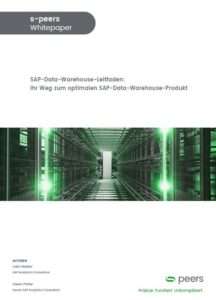
Positionierung der SAP Datasphere im Vergleich zu SAP BW/4HANA
Die SAP bietet unterschiedliche Lösungen im Bereich Data Warehousing an. Bisher war das BW/4HANA das Steckenpferd im Bereich Data Warehousing. Seit 2019 gibt es mit der SAP Datasphere eine innovative Erweiterung des SAP-Portfolios.
Die strategische Ausrichtung von SAP hat sich u.a. mit der Datasphere in den letzten Jahren Richtung Public Cloud-Produkte verschoben. Die Positionierung der Datasphere durch die SAP erfolgt als eine zentrale Komponente der SAP-Datenstrategie, die darauf abzielt, die nahtlose Vernetzung und Integration von Daten über verschiedene Quellen, Systeme und Cloud-Plattformen hinweg zu ermöglichen.
Wie sich die SAP Datasphere im Vergleich zu SAP BW/4HANA genau positioniert und wie sich die jeweiligen Anwendungsbereiche, Zielgruppen und Hauptfunktionen unterscheiden, können diesem weiterführenden Beitrag entnommen werden.
Mehr zur Positionierung der SAP Datasphere im Vergleich zu SAP BW/4HANA im Wiki erfahren:
Wir begleiten Sie gerne!"
Wie lange dauert der Implementierungsprozess und was sind die einzelnen Schritte?
Der Implementierungsprozess hängt von verschiedenen Faktoren ab und dauert in der Regel 4 – 8 Wochen. Er setzt sich aus folgenden Schritten zusammen:
Zielsetzung
Anforderungen
Ist-Analyse
Konzeption
Umsetzung
Coaching
SAP Datasphere: 5 Tipps für die erfolgreiche Implementierung
Die SAP Datasphere ist DAS Warehousing-Produkt der Zukunft von der SAP. Aber was ist die Datasphere überhaupt und was muss ich bei einer erfolgreichen Implemtierung beachten? Dies und vieles mehr beantwortet unser Video.
- Was ist die SAP Datasphere?
- Was sind die konkreten Vorteile für den Kunden?
- Was ist der Unterschied zu anderen Data Warehousing Solutions der SAP?
- Wie ist der Ablauf der Implementierung?
- Gibt es Erfolgsgeschichten aus der Praxis?
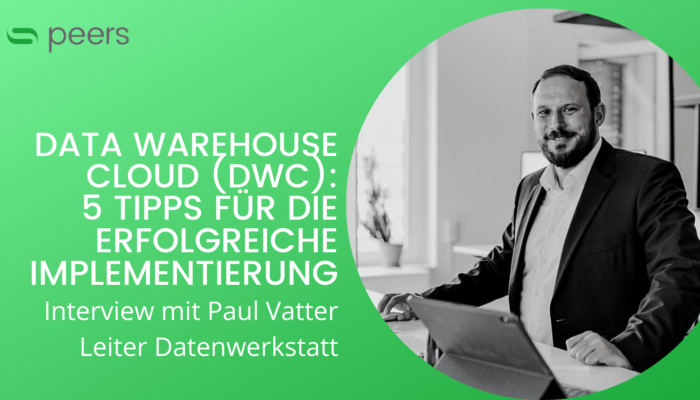
SAP Datasphere Schulungen
- Wir bieten auch regelmässige Schulungen in Kleingruppen zum Thema SAP Datasphere an.
- Dauer der Einführungsschulung: 1 Tag
- Dauer der weiterführende Schulung: 1 Tag
- Wir sind SAP Trainingspartner – somit bekommen Sie auch ein weltweit anerkanntes Zertifikat ausgestellt.
- Vor Ort oder auch Online möglich
WISSEN
Wissenswertes
Erhalten Sie einen umfassenden Einblick in die jüngsten Funktionserweiterungen von SAP Datasphere (ehemals DWC) und SAP Analytics Cloud (SAC) für das zweite Quartal 2024. Am 28. Mai laden…
Erfahren Sie alles Wichtige über die neuesten Funktionsupdates von SAP DWC & SAC im 4. Quartal 2024. Am 28. November findet unser exklusives Webinar statt…
Die SAP bietet mit Lösungen wie SAP BW/4HANA und SAP Datasphere unterschiedliche Data-Warehousing-Optionen an. Während BW/4HANA auf strukturierte Unternehmensdaten und Analytik spezialisiert ist, konzentriert sich die Datasphere auf umfassende Datenintegration über Plattformen hinweg…
Erfahren Sie alles Wichtige über die neuesten Funktionsupdates von SAP DWC & SAC im 4. Quartal 2023. Am 13. Oktober findet unser exklusives Webinar statt…
Erfolg durch Datenanalyse: Treffen Sie unseren Experten beim SAP Analytics Forum in Walldorf für ein spannendes Gespräch! Das SAP Analytics Forum ist ein Event, das von der SAP organisiert wird…
Maximieren Sie Ihre Datennutzung! Neueste Funktions-Updates für die SAP Datasphere (ehem. Data Warehouse Cloud) & SAP Analytics Cloud im Juli…
Langfristig konsistentes Datenmanagement ist eine komplexe Herausforderung für Unternehmen, da Daten häufig in verschiedenen Systemen und an unterschiedlichen Orten gespeichert…
SAP Datasphere (ehem. DWC) & SAP Analytics Cloud im Fokus – Erfahren Sie alles über die neusten Features im ersten…
Mit dem Update für das dritte Quartal liefert SAP zahlreiche Neuerungen und Features für die Cloudprodukte SAP Data Warehouse Cloud…
Die BW Bridge wird von der SAP als Möglichkeit präsentiert, ein System aus einer klassischen on-premise Umgebung in die SAP Datasphere (ehem. Data Warehouse Cloud) zu transferieren. Dieses Interview wurde von Daniel Moser (Senior Account Manager, s-peers AG) mit Eugen Gering…
Was ist ein Data Warehouse (Kapitel 1), wie ist es aufgebaut (Kapitel 2) und warum brauche ich als Organisation ein Data Warehouse (Kapitel 3)? Diese Fragen beantwortet der folgende Wissensartikel…
Dieser Artikel gibt einen Überblick über SAP Analysis for Office (AfO). Zudem werden folgende Fragen beantwortet: Was ist eine SAP…
*Abgesagt* Auf einen Apéro am 12. Mai 2022 mit… der Data Warehouse Cloud (DWC) SAP Data Warehouse Cloud (DWC) wird…
Im Webinar „DWC & SAC Feature-Update“ informieren wir über aktuelle Trends und neue Features der SAP Data Warehouse Cloud (DWC)…
Was ist der DWC Data Marketplace? Was sind die Vorteile des DWC Data Marketplace? Wie funktioniert der Datenimport mithilfe des DWC Data Marketplace? Diese und weitere…
Es erwartet Sie ein spannendes Webinar mit dem Vergleich der beiden Data Warehouse Lösungen SAP DWC und SAP BW/4HANA. Programm:…
Beim Aufbau komplexer Datenmodelle in der Data Warehouse Cloud werden häufig Daten aus unterschiedlichen Quellen wie beispielsweise dem DWC Data Marketplace herangezogen…
Dieser Artikel beschreibt mit der SAP BW Bridge eine neue Lösung, die unternehmensinterne Informationssysteme mit der SAP Datasphere (ehem. Data…
Seien Sie dabei bei der SAP Sapphire Zürich 2022! Die Sapphire macht dieses Jahr einen Stopp vor Ort in Zürich!…
Das SAP Analytics Forum ist ein von der SAP organisiertes Weiterbildungs-Event für die SAP Analytics Produkte. Die s-peers AG ist…
Im Webinar „DWC & SAC Feature-Update“ informieren wir über aktuelle Trends und neue Features der SAP Data Warehouse Cloud (DWC)…
Über die Idorsia Pharmaceuticals Ltd Idorsia Pharmaceuticals Ltd. wurde vor drei Jahren aus der Actelion Pharmaceuticals Ltd. (einem in der…
Im Webinar „SAP Datasphere (ehemalig SAP Data Warehouse Cloud) & SAP Analytics Cloud Feature-Update“ informieren wir über die aktuelle Trends…
Start in das neue Jahr…mit der Data Warehouse Cloud (DWC) Die SAP Data Warehouse Cloud (DWC) wird von der SAP…
Sie nutzen «SAP Analytics Cloud» als Reporting-Tool und möchten Ihren Data Lake ohne Datenreplikation anbinden…
Für wen ist die Demo interessant? Sie nutzen «SAP Analytics Cloud» als Reporting-Tool und möchten Ihren Data Lake ohne Datenreplikation…
Seien Sie dabei! Vom 13. bis 15. April und vom 20. bis 22. April treffen sich Thought Leader und Experten…
Seien Sie virtuell dabei! Das SAP Analytics Forum bietet Ihnen die ideale Plattform, um sich über Innovationen im Bereich SAP Analytics zu…
